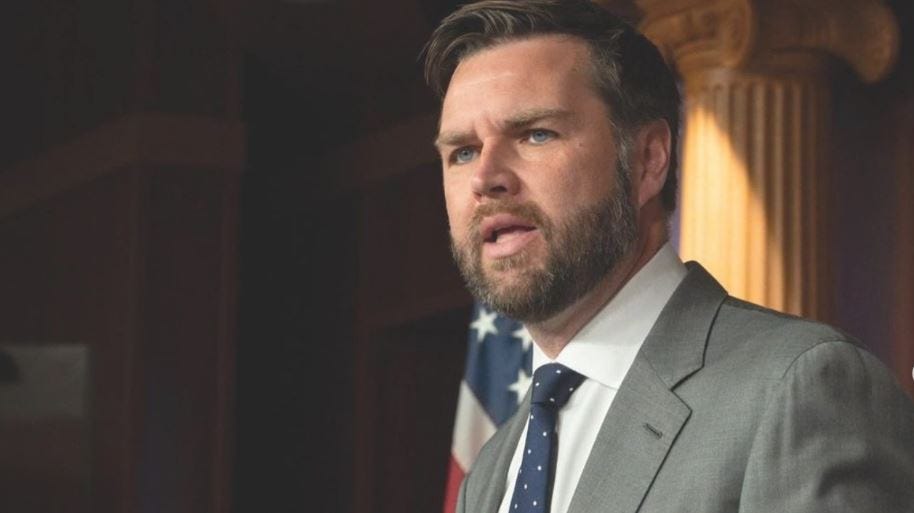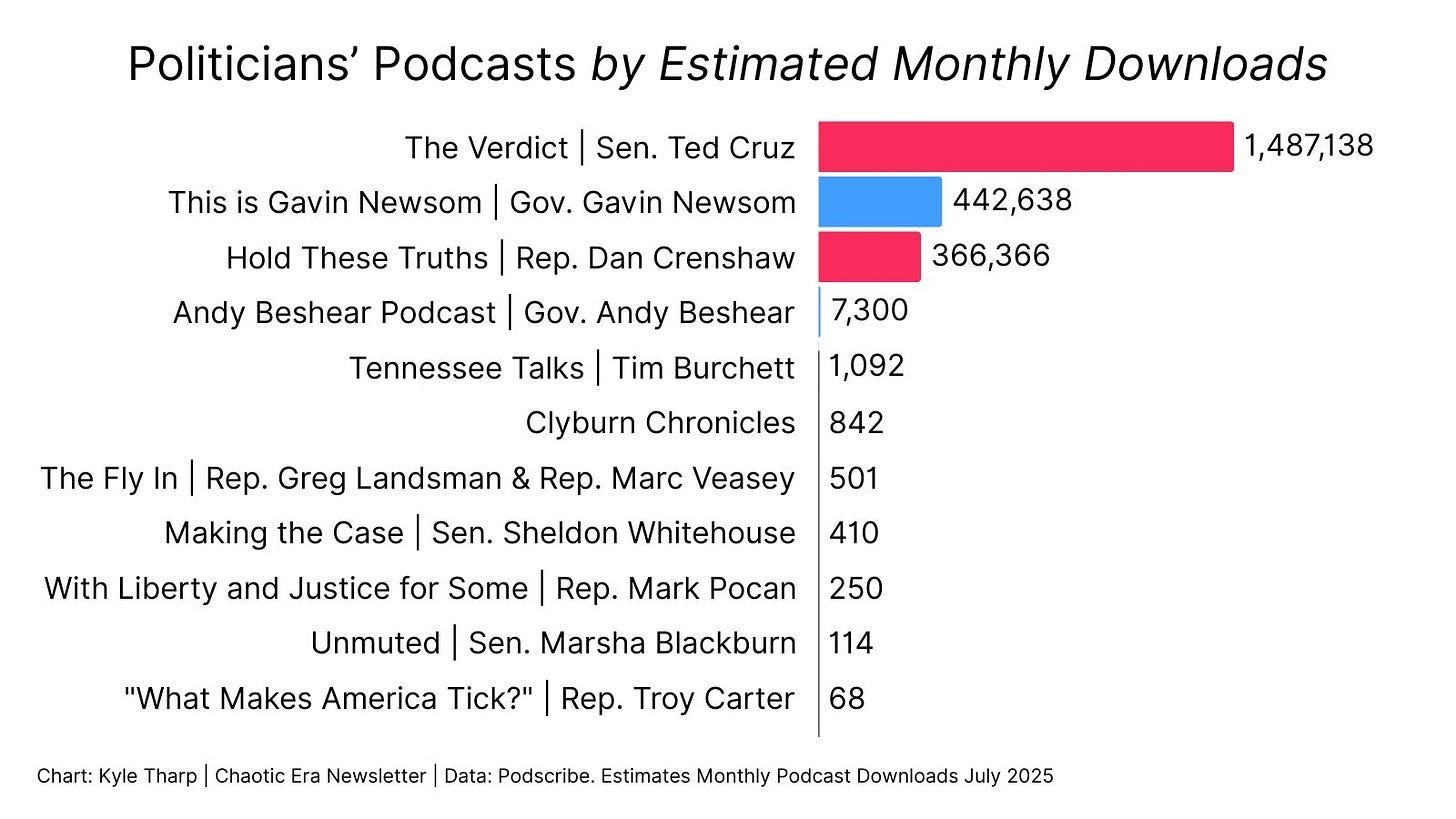Pete Buttigieg has a beard.
He didn’t always. During the former mayor of South Bend, Indiana’s time as Transportation Secretary in the Biden Administration, Pete was clean shaven. When he ran for president in 2020, not a stray hair to be seen. But this year, after the 2024 election, “Mayor Pete” has grown a beard.
*Sidenote: I stayed a night in South Bend on my drive from Washington D.C. to Boise. It’s a small, former industrial city home to Notre Dame - and many great local Midwest brews!
Vice President JD Vance has a beard, too. But he didn’t always. Vice President Vance grew his beard when running for the Senate in 2022. Before that, Vance had been clean shaven like Mayor Pete, though that may be the only thing the two Midwesterners have in common outside of geography. Vance is actually the first president or vice president to sport a beard in over a century. While facial hair was in style after President Lincoln took office, it fell out of fashion in the 20th century. To be clean shaven was to be professional and trustworthy - to be “in” - a member of the establishment in the modern era of business, politics, and culture. But today, when anti-establishment sentiments are dictating our politics, beards are making a comeback.
Research suggests that beards in politics can make politicians seem more “masculine” and “competent.” But I think the more important thing to pay attention to is the “common man” appeal that a beard can carry. As I wrote about a few weeks ago, America is in a new era of populist politics. Candidates for national office are distancing themselves from the “establishment” and focusing more on the industrial swing states of the Midwest, blue-collar workers, and rural America (at least in messaging - policy is a different story). The beards, from the right and left, are a form of political strategy: Pete and JD are trying to relate to you. In ditching the razor, the two are also giving away a maybe not-so-secret secret: they both will run for president of the United States in 2028.
Gavin Newsom doesn’t have a beard. But he does have a podcast. This year, the California governor debuted This is Gavin Newsom, his new podcast reaching across the aisle to host conversations about the state of the nation, and specifically, the Democrat party. In his podcast, Governor Newsom and his guests try to pinpoint where the Democrats have gone wrong leading up to the 2024 beatdown at the ballot box. In short, Newsom is wondering how Donald Trump got back to the White House, and how Democrats like him can do more to appeal to young men and rural Americans who have drifted right in recent years. Podcasting has leaped forward in recent years as a form of political media. And conservatives got to it first. As peoples’ trust in traditional media sources (TV, radio) falls, alternative media like podcasting has gotten a boost. The “manosphere” as some call it, consists of shows from hosts like Joe Rogan and Andrew Shulz that appeal widely to young men. Democrats are zoning in on these media sources: Pete Buttigieg and Bernie Sanders appeared separately on Andrew Shulz’s podcast to address listeners - a show Trump visited during the 2024 race. And Gavin Newsom began his own podcast, often focusing on issues relating to young men. The early days of podcasting felt granola. Since, it has swung right. Now, Democrats are getting their message out via podcasts more and more. People tend to have polarizing preexisting views of the California Governor Newsom. But, with the podcast, This is Gavin Newsom. He is literally and intentionally redefining himself to a national audience.
While the party is still defining itself after Kamala Harris lost the 2024 presidential election, Pete Buttigieg and Gavin Newsom are two leaders gearing up to fill the power vacuum. They are trying to steer the direction of the Democratic party by elevating their own messages, verbal and nonverbal. Recently, Governor Newsom engaged with voters in South Carolina, the first primary state of the Democratic primary process which nominates the party’s presidential selection. Why would the governor of California travel across the country to host a town hall in South Carolina? I’m sure he wanted to hear what South Carolinians had to say. But he wants to be president - plain and simple. Mayor Pete and Governor Newsom know that the party can’t skip the voters that they missed in 2024 if they want to win going forward. And JD Vance, the presumptive Republican nominee for president in 2028, understands the need for his party to keep those voters in order to retain power in Washington. The beards and the podcasts are two ways in which these three presidential hopefuls are crafting their image for their next run. Don’t be surprised if you see them all snug in flannels this fall.
Other candidates will run, of course. Bernie Sanders and Alexandria Ocasio-Cortez have crisscrossed the country on their “Fighting Oligarchy” tour, discussing wealth inequality in America and President Trump’s policies. Michigan Governor Gretchen Whitmer, Connecticut Senator Chris Murphy, and New Jersey Senator Corey Booker are all taking steps to stand out in a Democratic party void of clear leadership and direction. Health and Human Services Secretary Robert F. Kennedy Jr. may launch another bid for the presidency, this time as a Republican. Virginia Governor Glenn Youngkin at times appears poised for national politics, too. What happens more times than not is a candidate comes out of the woodwork to earn a party nomination (Trump, Obama, Clinton, etc.). It may not even be worth trying to guess who will be standing on the national debate stage three years from now. But keep an eye on the beards. And the podcasts too. They say something about how our country is shifting, politically. And how the politically aspiring among us are shifting with it.
Dylan Morse
The NorthStar Narrative




